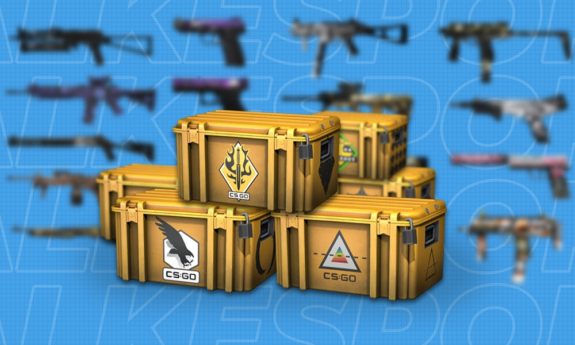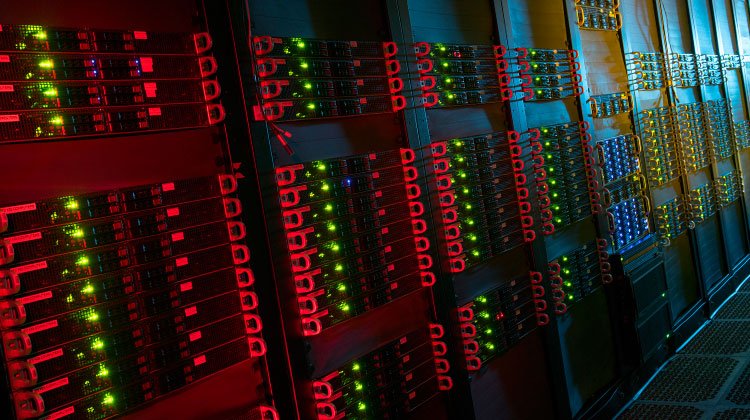
CSGO Players Spend Over $100 Million on Cases in March
Recently, it was reported that CSGO players spent over $100 million on cases in a…

There might be times when you are playing CSGO, or you are on a community CSGO site, that you hear the phrase ‘tick rate’. But do you actually know what it means? Here, we will guide you through everything you need to know about tick rate in CSGO.
If you have spent a decent amount of time as part of the CSGO gaming community, then the chances are, you would have heard about the term FPS – Frames Per Second. This stands for the number of distinct images that will appear on your screen during one single second. Ping represents the amount of time that it takes for your device to transmit specific data to a server via the internet and for it then to return back to you.
However, one that pops up very often in the CSGO community is Tick Rate. So, we’ll take a look at exactly what it is. We are now going to look at everything about it – from how it is defined to examples of it – and how the Tick Rate can affect every single smoke or grenade you throw.
The definition of tick rate is this. It is the frequency (that is measured in Hertz) with which the game can update its own game state at that exact moment in time, by sending information to the server that is hosting the game
The information sent includes all sorts of data, such as player position, how grenades have been thrown and even the positions of those cool ‘Inferno’ chickens. This is actually a very abstract concept – more so than many others in the game. But it still very much influences the performance of the players.
Let’s look at a practical example. So, let’s say that Valve’s matchmaking servers are hosted with a 64 Hertz Tick Rate. This is compared to a Faceit server and the Valorant ranked server, Riot’s new shooter, that has a Tick Rate of 128.

Use Promo Code WELCOME for a 100% deposit bonus.
100% first deposit bonus which means that we will add an extra 100% to the amount you deposit into your player account. The maximum amount for the bonus is €550 and the rollover requirement is x10 for betting and x30 for casino (qualified deposited amount + bonus).
This means that, on every second, Valve’s servers will update the information concerning all aspects of the MM game 64 times. In comparison, Faceit’s servers update a massive 128-times. This means double the amount of updates in that same period of time.
It isn’t hard to understand that, if your information is updated twice as quickly on a specific server, then that will be much more precise. Counter-Strike: Global Offensive is a game of just a few milliseconds. Just as the game’s Latency (Ping) with what you are playing on is very important, the frequency with which your server registers where your shots are going – and whether or not they will hit your target will also matter a great deal to players.
With Tick Rate being so important, then why is it that Valve will only provide its main player base with 64 Tick servers? Ultimately, this is unknown and we can’t answer exactly why this is. This is something that we can only speculate on.
The most obvious reason for this would be because of the costs that are attached to upgrading thousands upon thousands of servers to a higher Tick Rate. This would be a very costly investment that they may not be considering right now.
Amongst the gaming community, there have been all sorts of theories and rumours that have been discussed on this topic throughout time. The last one was during the most recent CS:GO operation, Broken Fang. In one of the newer missions that are available to play in the ‘Autumn Harvest Operation’, there were several radios strewn around the map. Every single one of them was tuned into channel 128. Obviously, most people believed that this was obviously not a coincidence and believed that this pattern was referencing a pending update to the Tick Rate of the server.
This rumour was already circulating for months before the operation came out. During a live transmission of ESL One’s Road to Rio, one of the most respected CSGO casters ever, Henry ‘HenryG’ Greer, hinted at a possible update to 128 Tick Rate servers in CSGO matchmaking. However, it seemed that the colleagues that worked alongside him at the analysts’ desks knew nothing about this.

Use Promo Code WELCOME for a 100% deposit bonus.
100% first deposit bonus which means that we will add an extra 100% to the amount you deposit into your player account. The maximum amount for the bonus is €550 and the rollover requirement is x10 for betting and x30 for casino (qualified deposited amount + bonus).
Whatever the case, as we speak, none of the past theories and rumours have proven to have any real substance to them – and Valve has never mentioned any update, not even once.
However, because Riot’s new FPS game, Valorant, has each of its ranked servers at a 128 Tick Rate, it doesn’t seem beyond the realms of possibility that Valve might consider making the change in the near future… so we’ll have to sit back and watch this space.
If you have been playing the game for a while, then you will probably have noticed that some of the smokes that you have taught yourself from YouTube tutorials, don’t land where you think they should when playing matchmaking games. There are three reasons that this may happen to you:
Some smokes out there involve a Jump Throw bind which can only work on a specific Tick Rate. That means that if you were to lob a Jump Throwing smoke that lands where it should in a Faceit pub (with a 128 Tick Rate), then they may not land in the exact same spot when you try the same manoeuvre when playing Matchmaking with your CSGO friends on a 64 Tick Rate server.
The speed and place in the air at which your model is at the exact moment you throw your smoke influences where it should land. That is why you need a Jump Throw bind, because when this is used, it will automatically throw the grenade when you are at the highest point of your jump. This makes the Lineups consistent. Without it, this is practically impossible.
Bear in mind that the difference between 128 tick and 64 tick servers means that the former one will update the server information twice as quickly. As such, the differences between where the smokes land, from Tick Rate to Tick Rate is clearly justifiable.

Use Promo Code WELCOME for a 100% deposit bonus.
100% first deposit bonus which means that we will add an extra 100% to the amount you deposit into your player account. The maximum amount for the bonus is €550 and the rollover requirement is x10 for betting and x30 for casino (qualified deposited amount + bonus).
If you jump in real life, your speed and height will vary – and this is the same with your model player. However, if playing on a 64 Tick server, then the speed in the air during that jump will only be updated half the number of times as on a 128 tick server.
So, because of how jumps work in CSGO, the highest movement speed will occur between 2 ticks on a 64 Tick server. In this case, if it does happen between 2 ticks, the server will only be able to register the speed either right before the peak or right after the peak value of your speed. As such, your player model on a 64 Tick rate server will always appear to have managed a lower peak speed than that exact same jump by the exact same player model on a 128 Tick Rate server. This will then influence where your smoke grenade will land.
So, there you have it. Hopefully this has answered some of the questions you may have had about Tick Rate in CSGO. Because of what this actually means for your gameplay, we would always recommend checking your tutorials to see whether or not they involve jump throwing. You want to make sure you are learning it and getting it right. Hopefully, in the not too distant future, we might be looking at how the 128 Tick Rate upgrade has affected the game! Who knows.